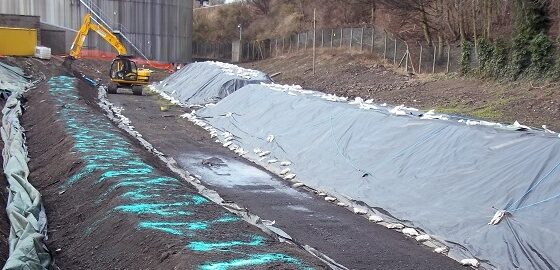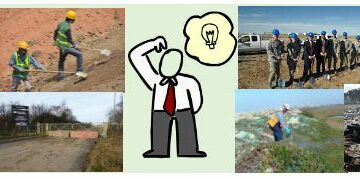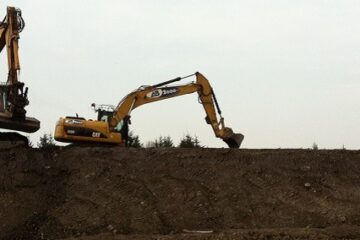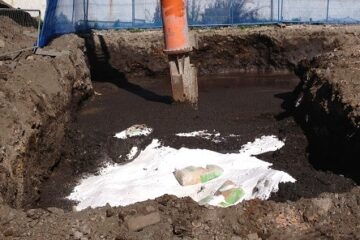We’ve answered ‘What is Bioremediation’ here.
Bioremediation occurs naturally, just in most cases very slowly so you don’t see any improvement in soil contamination unless you monitor the concentrations for years.
Designing a bioremediation project should involve determining how to speed the process up to a level that meets the budget and timeframe of the client.
The rate of bioremediation is based on 4 factors- oxygen, food, temperature, and moisture (not necessarily in that order).
Here are 5 ways to optimize bioremediation on excavated soils (in-situ remediation is also possible)-
- Aerate the soils- the more air you can get in to the soils, the greater the rate bacteria can respire and the greater the rate of contaminant degradation. Physical ‘turning’ also results in physical attrition of contaminants, another benefit in reducing contaminant concentrations.
- Balance the nutrients – the main food source is the contamination you’re trying to treat, however hydrocarbon degrading bacteria require Nitrogen, Phosphorous, and Potassium (NPK) to be able to degrade contamination. Producing the right balance of nutrients will speed up the remediation process.
- Balance moisture- Bacteria require moisture to do their job, too much moisture and you starve them of oxygen, not enough and you don’t get the most out of them.
- Warm the soils – maintaining a working temperature in the soils can be approached several ways, bioremediating in large piles (bio-piles) gives an insulating effect which keeps the core of the bio-pile warm. Sheeting the pile with ‘fleeces’ keep the warmth (and the moisture) in the bio-pile. Probably the easiest approach is to do the work in the summer months, and avoiding the freezing winter months.
- Add contaminant specific bacteria – I am always a little cautious about this approach, sometimes it works and sometimes it doesn’t. Culturing the native bacteria gets results every time. Adding new bacteria can produce great results, assuming they survive. Soil conditions have so many variables including pH, and metal mixtures, and few bacteria can stand up to the test of being introduced to a new soil, so this approach can be hit or miss regarding speeding up the remediation process.
3 ways to enhance remediation
The next level up is to introduce physical enhancement-
- Aerate the soils – inject air through the soils, a regular or constant injection removes the need to Turn soils.
- Warm the soils – heating the soils, which can be done by injecting warm air, will significantly improve the rates of degradation.
- Make the contamination more available – contamination in soils can be tied up in the heart of the soil structure, and/or the contamination can be present in large molecules, both of which can take time to degrade. Adding the right surfactant to the soil will release the contamination and facilitate faster bioremediation.
As I am sure you can tell, getting the required enhancements can be a challenge, heating soils while maintaining a high moisture level is just one of them.
Deciding on the right actions for your site, your budget and your timeframes, is where an experienced remediation contractor can be very helpful.
2021
Soil remediation guide
Approaching soil remediation without any prior knowledge can be difficult and uncomfortable at times, especially when it can potentially be very costly. This free eBook will help you understand the whats, the whys and the hows of soil remediation in the simplest terms.







“Deciding on the right actions for your site, your budget and your timeframes, is where an experienced remediation contractor can be very helpful.”
Unfortunately,experienced remediation contractors don’t come cheap which is why so many property owners choose lower-cost and less effective methods of remediation which may or may not include bioremediation measures